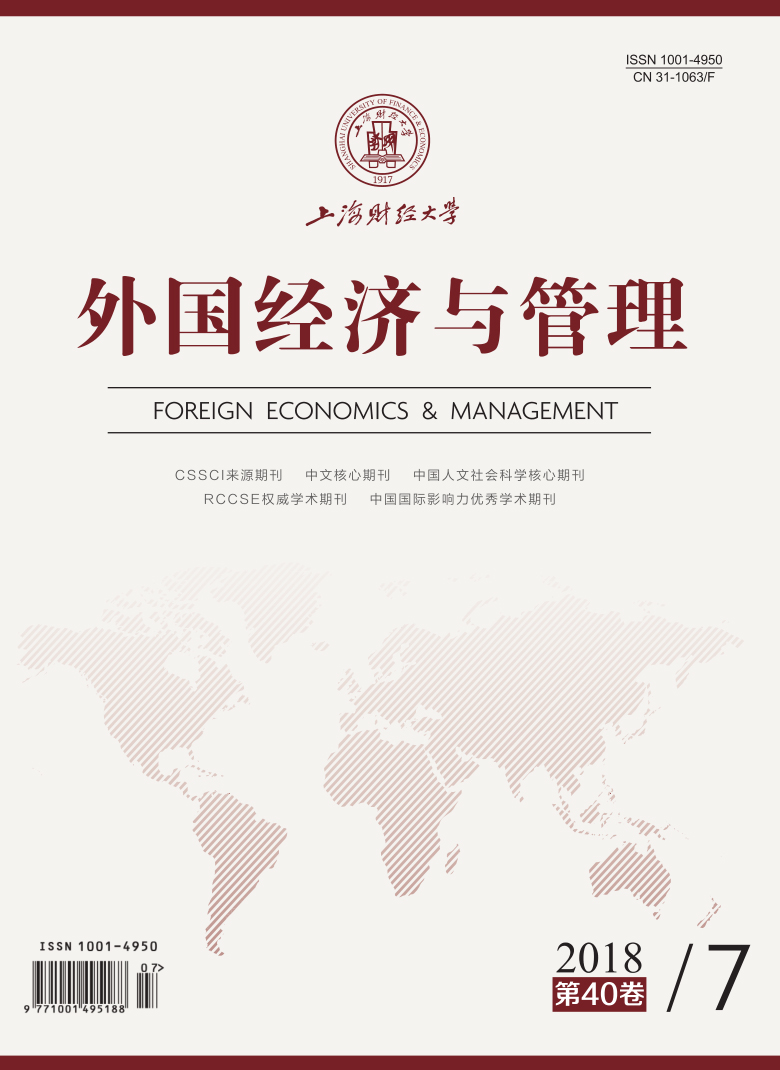For firms lacking core competitiveness in emerging market countries, their competitive advantage is more likely to stem from the creative use of common resources in the catching-up process. Based on the composition-based view (CBV) which is proposed by Luo Yadong and other scholars, this paper takes the case study of the Nice Group and explores the characteristics of latecomer firms’ strategies and the strategic change process by means of a analytical framework of the composition-based strategy consisting of compositional offerings, compositional competitions and compositional capabilities. The case study finds that in the process of strategic changes, the composition-based strategy evolves from " edge catching-up” to " innovation and upgrading” and finally to " integration”. In addition, the market position and the value chain of latecomer firms are both evolving from low-end to high-end. The competitive advantage gradually evolves from cost leadership to differentiation. This paper summarizes that latecomer firms need to adopt the composition-based strategy flexibly according to their own situations, so as to achieve rapid catch-up from late-development to first-development. The conclusion enriches the relevant theoretical system of the composition-based view and strategic changes, and contributes to advance the evolution of the composition-based strategy and reveal the essence of the strategy change process of Chinese latecomers.
 / Journals / Foreign Economics & Management
/ Journals / Foreign Economics & ManagementForeign Economics & Management
JIN Yuying, Editor-in-Chief
ZhengChunrong, Vice Executive Editor-in-Chief
YinHuifang HeXiaogang LiuJianguo, Vice Editor-in-Chief
Research on the Process of Latecomer Firms’ Strategic Changes from the Perspective of Composition-Based View: A Case Study on the Nice Group
Foreign Economics & Management Vol. 40, Issue 07, pp. 19 - 31 (2018) DOI:10.16538/j.cnki.fem.2018.07.002
Summary
References
Summary
[1]Barney J. Firm resources and sustained competitive advantage[J]. Journal of Management,1991, 17(1): 99-120.
[2] Bates K A, Flynn J E. Innovation History and Competitive Advantage: A Resource-based View Analysis of Manufacturing
Technology Innovations[J]. Academy of Management Best Papers Proceedings,1995, 1: 235-239.
[3] Chaudary A, Fatima A, Zafa F. Strategic Change: The Influence of Managerial Characteristics and Organizational Growth[J]. International Journal of Scientific & Engineering Research,2014, 5: 535-542.
[4] Dutrénit G. Building Technological Capabilities in Latecomer Firms: A Review Essay[J]. Science Technology & Society,2004, 9(2): 209-241.
[5]Hamel G. The Why, What and How of Management Innovation[J]. Harvard Business Review,2006, 2: 72-84.
[6]Kelly D. Organizational Inertia and Momentum: A Dynamic Model of Strategic Change[J]. Academy of Management
Journal,1991, 34(3): 591-612.
[7]Lee K, Lim C. Technological Regimes, catching-up and leapfrogging: Findings from the Korean Industries[J]. Research
Policy,2001, 30(3): 459-483.
[8]Luo Y, Child J A. Composition-Based View of Firm Growth[J]. Management and Organization Review,2015, 29: 379-411.
[9]Luo Y, Wang S L. Foreign Direct Investment Strategies by Development Country Multinationals: A Diagnostic Model for
Home Country Effects[J]. Global Strategy Journal,2012, 2: 244-261.
[10]Luo Y, Rui H C. An Ambidexterity Perspective toward Multinational Enterprises from Emerging Economies[J]. Academy of
Management Perspective,2009, 11: 49-70.
[11] Nason R, Wiklund. An Assessment of Resource-Based Theorizing on Firm Growth and Suggestions for the Future[J]. Journal of Management,2015, 9: 1-52.
[12] Oehmichen J, Schrapp S, Wolff M. Who needs experts most? Board industry expertise and strategic change—A contingency
perspective[J]. Strategic Management Journal,2017, 38: 645-656.
[13]Rajagopalan, Nandini, Spreitzer and Gretchen. Toward a theory of strategic change: A multilens perspective and intergrative
framework[J]. The Academy of Management Review,1997, 22: 48-79.
[14]Yi Y. Dynamic capabilities and the speed of strategic change: Evidence from China[J]. IEEE Transactions on Engineering
Management,2015, 62(1): 18-28.
[15]Young A A. Increasing returns and economic progress[J]. The Economic Journal,1928, 38(152): 527-542.
Cite this article
Xu Qiang, Zhang Liwei, Yang Jing. Research on the Process of Latecomer Firms’ Strategic Changes from the Perspective of Composition-Based View: A Case Study on the Nice Group[J]. Foreign Economics & Management, 2018, 40(7): 19-31.
Export Citations as:
For





 9473
9473  11370
11370

